Big Bend National Park in Texas is a hidden gem, offering a unique wilderness experience unlike any other. With over 800,000 acres encompassing mountains, deserts, and the majestic Rio Grande River, Big Bend is the ideal destination for those who crave exploring raw natural beauty and seeking solitude amidst vast nature.
But Big Bend is more than just a typical national park. Its untamed beauty, vastness, and isolation create a special allure, inviting the most daring adventurers. Join “Du lịch khắp thế gian” (Travel the World) to discover stunning hiking trails, must-see attractions, and helpful tips for a memorable backpacking trip in Big Bend Desert, Texas.
Big Bend: Land of Contrasts
Nestled deep in southwest Texas, Big Bend National Park stretches for over 100 miles along the Mexican border. The diversity of terrain here is astonishing. You can begin your journey from the towering Emory Peak in the Chisos Mountains, then descend along the mountainside into the arid Chihuahuan Desert, where cacti and thorny shrubs reign. Finally, you’ll reach the legendary Rio Grande River, which has carved magnificent limestone canyons over millions of years.
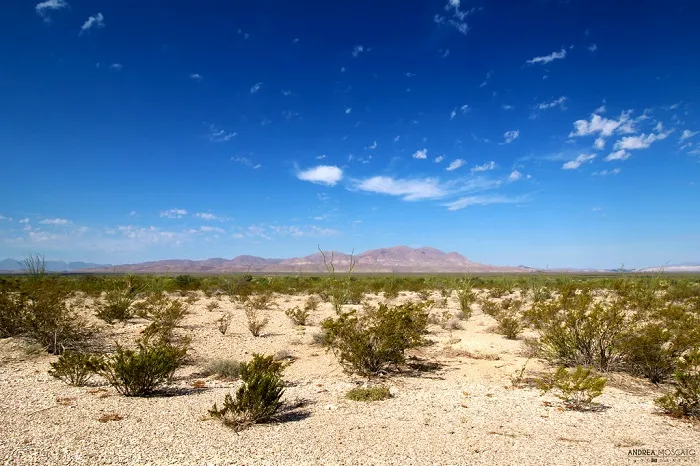
Big Bend is not only a natural wonder but also a land rich in history. For centuries, it was a cultural crossroads for the Spanish, Comanche Native Americans, and Mexican farmers. By the early 1900s, the area was mainly used for mining. However, recognizing the unspoiled beauty of the land, people advocated for its preservation. And in 1944, Big Bend National Park was officially established.
Big Bend Hiking Guide: Explore on Foot
Today, Big Bend is a paradise for outdoor adventure enthusiasts. With over 150 miles of hiking trails, this park offers countless options for all skill levels. But before you start your journey, you need to decide which area you want to explore: mountains, desert, or river? Here are a few suggestions for you:
1. Chisos Mountains Area:
The Chisos Mountains are ideal for those who love mountaineering and trekking. One of the most popular trails is the path to Emory Peak, the highest point in the park.
- Emory Peak Trail: This trail is approximately 10 miles round trip and has a significant elevation gain. However, your effort is rewarded with breathtaking panoramic views from the summit.
- Lost Mine Trail: This is an excellent option for a day hike. The trail is about 5 miles round trip and has a moderate elevation gain, suitable for many hikers.
- South Rim Trail: This trail is approximately 12 miles long and takes you to the southern rim of the Chisos Mountains, where you can admire magnificent views of the desert and the Rio Grande River.
- Chisos Basin Loop Trail: If you don’t have much time, this trail is a great choice. It’s only about 1.8 miles long and suitable for all ages.
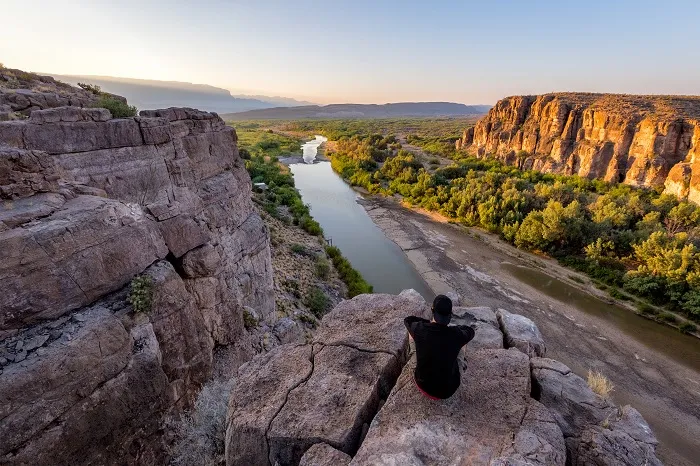
2. Desert Area:
The Chihuahuan Desert offers a raw and harsh beauty. Hiking here is a unique experience, allowing you to explore the unique desert ecosystem and admire the strange landscapes.
- Chimneys Trail: This trail is approximately 4.8 miles round trip and is famous for its unique volcanic rock “chimneys.” Along the way, you can see rock art by Native Americans.
- Grapevine Hills Trail: This is a shorter hike, only about 2.2 miles long, leading through shrubs and cacti to a group of perfectly balanced rocks, creating an impressive landscape.
3. Rio Grande River Area:
The Rio Grande River has created magnificent canyons and lush oases in the desert. Hiking along the river is a wonderful experience, allowing you to discover the beauty of the canyons and enjoy the tranquility of nature.
- Santa Elena Canyon Trail: This trail is a classic hike in Big Bend. The trail is approximately 1.7 miles round trip and follows the Rio Grande River to the mouth of Santa Elena Canyon, where you can look up at the towering limestone walls nearly 1,500 feet high.
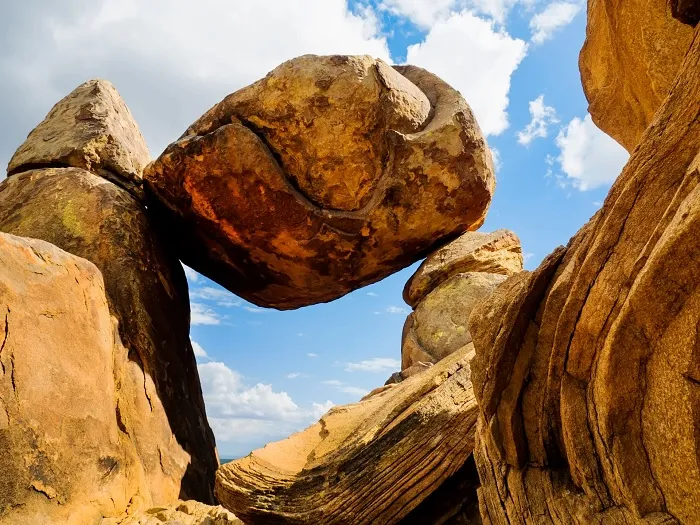
Best Attractions in Big Bend National Park
Besides hiking, Big Bend has many other exciting attractions. Here are a few suggestions:
1. Chisos Basin:
Located in the heart of the Chisos Mountains, this basin is a high mountain valley surrounded by towering cliffs. Here you can find lodging, restaurants, gift shops, campgrounds, and the park’s visitor center.
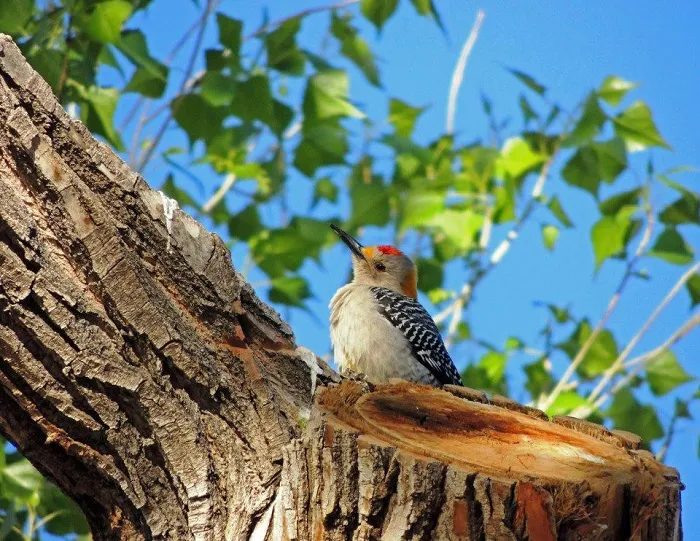
2. Hot Springs Historic District:
Located along the Rio Grande River, this area is home to natural hot springs where you can relax and enjoy the warm, mineral-rich waters. The area also has the ruins of a historic resort, offering a glimpse into Big Bend’s past.
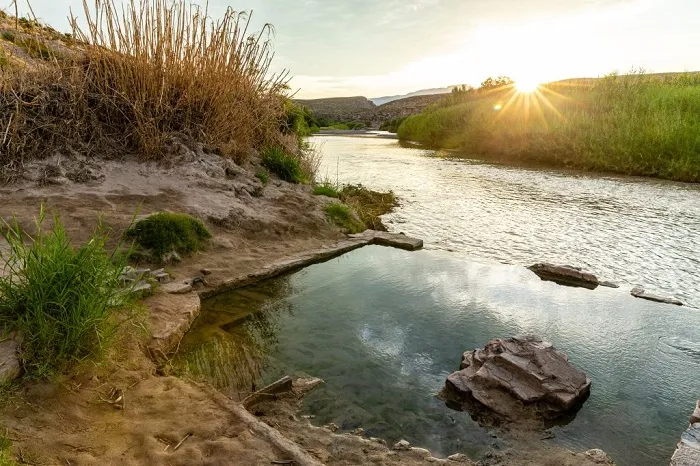
3. Santa Elena Canyon:
Santa Elena Canyon is one of Big Bend’s iconic landmarks. The towering 1,500-foot limestone walls create a majestic and impressive landscape. You can hike along the Rio Grande River to explore this canyon.
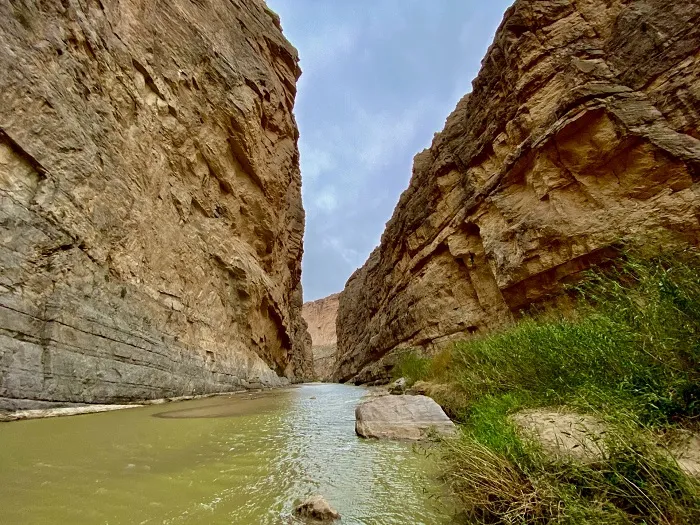
4. Boquillas Canyon:
Boquillas Canyon is another canyon located along the Rio Grande River. It is famous for its giant sand dunes and towering cliffs, creating a breathtaking landscape.
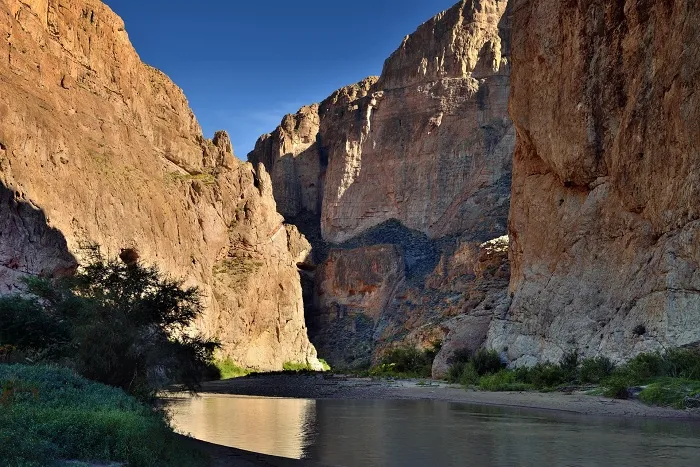
5. South Rim:
The south rim of the Chisos Mountains offers one of the best views in Big Bend. From here, you can admire panoramic views of the park, including the desert, mountains, and Rio Grande River.
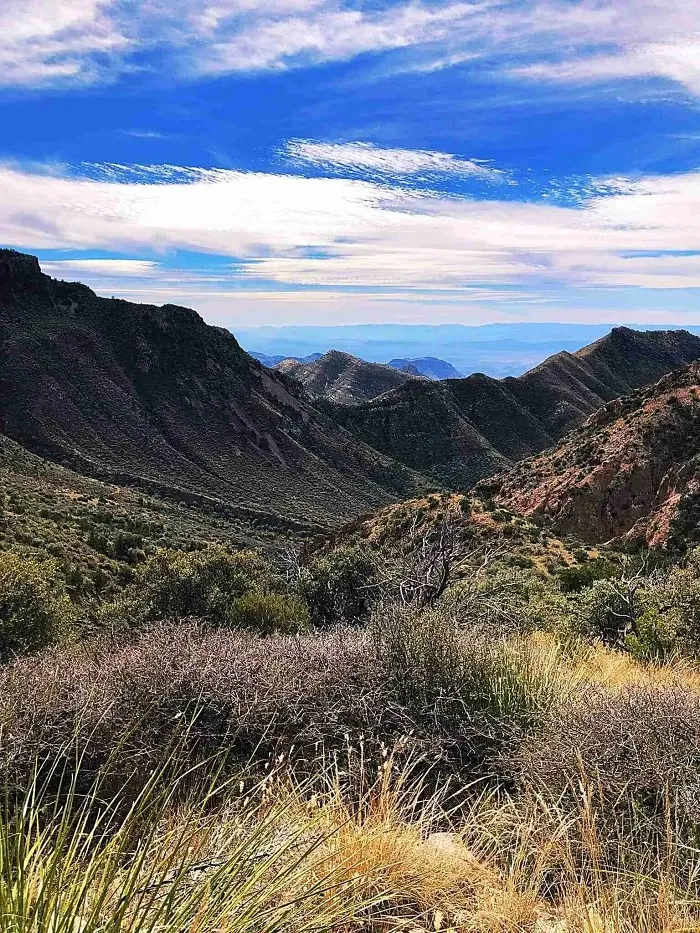
Helpful Tips for Hiking in Big Bend
- Ideal time to visit: Spring and fall are the best times to visit Big Bend, when the weather is cool and pleasant. Summer can be very hot, especially in the desert.
- Prepare thoroughly: Bring plenty of water, food, sunscreen, hat, sunglasses, and protective clothing.
- Wear appropriate footwear: Choose comfortable and sturdy hiking boots to protect your feet.
- Learn about the terrain: Research the trail you plan to hike and prepare for terrain challenges.
- Be aware of wildlife: Big Bend is home to many wild animals, including snakes, scorpions, and bears. Keep a safe distance and do not feed them.
- Protect the environment: Pack out all your trash and do not harm the park’s ecosystem.
Conclusion
Hiking in Big Bend Desert, Texas, is an unforgettable experience for those who love wild nature and adventurous exploration. With majestic landscapes, diverse ecosystems, and rich history, Big Bend is sure to provide you with lasting memories. Prepare thoroughly, plan carefully, and get ready for a journey to discover the unspoiled beauty of this land. Are you ready to conquer Big Bend?